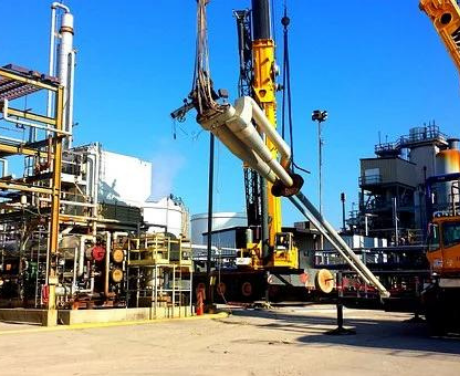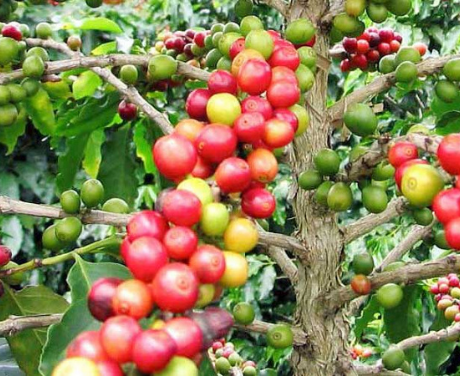Uganda Real Estate Investment Guide

Uganda, located in East Africa, has been growing steadily over the past decade.
It has a variety of options for investment, including but not limited to the real estate sector.
Interested in the Uganda real estate market but not sure where to start? If you’re an investor, then this guide is for you!
Table of contents
Geography and Location
Uganda is a landlocked country in East Africa. Kenya borders the country to the East, and to the north is South Sudan. To the West is the Democratic Republic of the Congo, to the southwest is Rwanda, and to the south is Tanzania.
Uganda is part of the African Great Lakes region and the Nile basin. It is famous for its variable but modified tropical climate.
Population, People and Language
According to the 2021 CAHF report, Uganda has a population of 47.12 million. 24.95% of the population lives in urban areas. With 165.4 people per sq. Km, the country is among those with a high population density in Africa.
The median age is 16.7 years. The three main languages spoken in Uganda are English, Swahili and Luganda.
The Population growth is at 3.27%.
Population Density
The nation’s population is relatively densely populated.
Median Age Group
Uganda’s population is considered the youngest in Africa.
Population Growth
The growth is among the highest in the developing world.
Urban Population
A quarter of the population lives in urban areas.
Real Estate and Investing
With the rise in housing demands, real estate in Uganda appears to be well-positioned for growth, generating attractive yields. The industry continues to exhibit resilience despite facing a hit due to strict lockdown measures.

Ongoing construction in the residential sector shows a promising future, indicating a positive bounce back. Five hundred new residential units are expected within 12-24 months, according to Knight Frank.
According to the Uganda Bureau of Statistics (UBOS), the real estate sector, on average, contributes about 7.5 per cent to Uganda’s GDP.
Rental Yield:
Residential yield averages from 8.6%-10%
Other Investor Information
- Ease of Doing Business Regional – 2020: 16th
- Ease of Doing Business International – 2020: 116th
- Foreigners are allowed to own real estate up to 49 or 99-year lease terms.
- Pro Landlord
Taxation
- Withholding Tax (WHT) – Dividends: 15%; Interests: 15%; Royalties: 15%. (non-residents)
- Capital Gains Tax – 30%
- Double Taxation Avoidance – Agreements with eight countries
- No Value Added Tax (VAT) on the sale of residential properties.
- Non-resident individual rental income – 15% (withholding Tax)
- No inheritance or gift tax
Economy
Uganda is one of the fastest-growing countries in Africa. The high rates of investment in public infrastructure are a boost to economic growth.
The economy is emerging from a steep recession brought on by the COVID-19 shock, which lowered growth to its lowest level in over three decades. Real GDP had contracted by 1.1 per cent in 2020 due to the total lockdowns caused by the pandemic. The spillover disrupted global demand for Ugandan exports, remittances and foreign direct investments.
The nation’s economy grew by 13.7 % in Q4 2021. The agriculture sector has maintained its growth by adopting enhanced farming practices to handle weather variability. The sector grew by 0.7% in Q4 of 2020/2021. Cash crop growing activities registered a 14.7% growth.
Value added in the industry sector grew by 17.7% in Q4 of 2020/2021. The manufacturing activities registered 18.0% growth. The services sector overall value added grew by 14.6%.
The services sector was heavily hit, with activity in essential areas such as education, housing, and food services constrained mainly for most of 2020-2021. Business and trading conditions improved locally and globally as limitations were eased, allowing investments to pick up in the fourth quarter of 2020. The manufacturing and construction industries are showing better signs of recovery than ever before, and this trend is expected to continue.
GDP
The national GDP was $37.37 Billion in 2021, with GDP Per capita at $958.19. Owing to the Covid 19 pandemic, the annual growth rate was 2.8% in 2020.
Source: Ubuturo Research
Growth Sectors

Services Sector
This is the fastest-growing sector. It includes telecommunications, hotels and restaurants, and tourism.

Agricultural Sector
Agriculture is the major source of livelihood and contributes 36% to the employment sector.

Industry Sector
The industry sector makes up 25.5% of the economy. It includes manufacturing, construction, and electricity supply.
The Ugandan economy relies on three major sectors. The fastest-growing is the services sector, which includes;
Telecommunications, hotels and restaurants, transportation and communications, and tourism.
Agriculture and industry are two other contributing sectors to the economy.
Emerging Sectors

Oil and gas
Western Uganda has an estimate of about 6.5 billion barrels of oil reserves

E-commerce
The industry is growing at a fast rate due to the growing middle class and continued usage of mobile phones

Software development
The need for software developers has grown as Uganda progresses into a regional tech hub

Automobile
The industry nears the take-off stage with construction of the Kiira Motors vehicles plant taking shape
Emerging sectors include;
The oil and gas, e-commerce, software development, and automobile industries.
Resources

Salt
Salt extraction has been a source of prosperity for decades in Uganda.

Coffee
Coffee is Uganda’s top-earning export crop contributing about 6% to GDP.

Copper
The largest copper mine in Uganda, contains about 4 million tons of copper.
Uganda has a large pool of natural resources which include;
- A favourable climate, like widespread rainfall, supports farming in areas with fertile land.
- Salt. Salt mining occurs at Lake Katwe, located inside Queen Elizabeth National Park.
- Arable land. Uganda has some of the most fertile soils in Africa, making agriculture a vital sector of the economy. The fertile soil is concentrated around the highland and Lake Victoria regions. These are used to grow high-value cash crops such as coffee, tea, cocoa, and sugar cane.
- Coffee. Robusta coffee grows in low-altitude areas of Central and Eastern Uganda. On the other hand, Arabica coffee grows in highland areas on the slopes of Mt. Elgon and Mt. Rwenzori.
- Copper. There is an estimate of more than 4 million tonnes of copper and an undetermined amount of cobalt. There are also approximately 2,800 acres of unexplored acreage at the site.
- Oil reserves. Western Uganda contains an estimate of about 6.5 billion barrels of oil reserves. Areas near Lake Albert in the same region also have promising oil fields.
- Other natural resources include iron, and small deposits of minerals such as limestone, clay, feldspar, diatomite, glass, kaolin, phosphate, nickel, and gold.
Tourism
Tourism is a fast-growing sector in Uganda. It is also a significant contributor to the country’s economy generating 7.75% of its GDP. The sector had shown immense growth pre-corvid, boasting over 1.5 million visitors annually. An increase in domestic tourism is also an added boost to the industry.
Uganda is one of the top tourist destinations in the world and one of only three countries with about 50% of the world’s known population of endangered mountain gorillas.

Game viewing is the most popular tourist activity in the country’s national parks. This is due to the country’s diverse wildlife, which includes the Ishasha tree-climbing lions, white rhinoceros, and elephants.
As the tourism sector continues to grow, it has subsequently boosted the real estate industry. This highlights opportunities like constructing high-quality accommodation facilities like cottages and hotels in national parks and surrounding communities.
Key Projects
Uganda–Tanzania Crude Oil Pipeline
Uganda–Tanzania Crude Oil Pipeline is a proposed oil pipeline in East Africa. It is intended to transport crude oil from Uganda’s oil fields to the Port of Tanga, Tanzania, on the Indian Ocean. The pipeline is planned to have a capacity of 216,000 barrels per day.
Uganda previously agreed to build a joint Uganda–Kenya Crude Oil Pipeline (UKCOP) to the Lamu Port in Kenya. However, concerns regarding security and cost reportedly motivated parallel negotiations with Tanzania regarding a shorter and safer route to Port Tanga, with the support of the French petroleum conglomerate Total SA.
The project will create between 6,000 to 10,000 jobs, while some 1000 jobs will be created during the operation phase of the pipeline. The pipeline estimated will cover a distance of over 1400km, making it the world’s longest-heated crude oil pipeline.
This project will likely start in 2025 and could cost about $3.5 billion.
Science, Technology & Innovation
The Entebbe Iconic ICT Park project aims to set up a place where; Innovators and international and local entrepreneurs can interact.
The project would cost about $175.8M.
Final Thoughts
Uganda is rich in natural resources. It also has an emerging middle class with disposable income. Some enticing foreign direct investment opportunities in Uganda include; real estate, agriculture, mining, tourism and more.
Investment in Uganda may be a great way to diversify your portfolio. It will also provide you with tax breaks that are not available anywhere else. Get started today by browsing our website.
